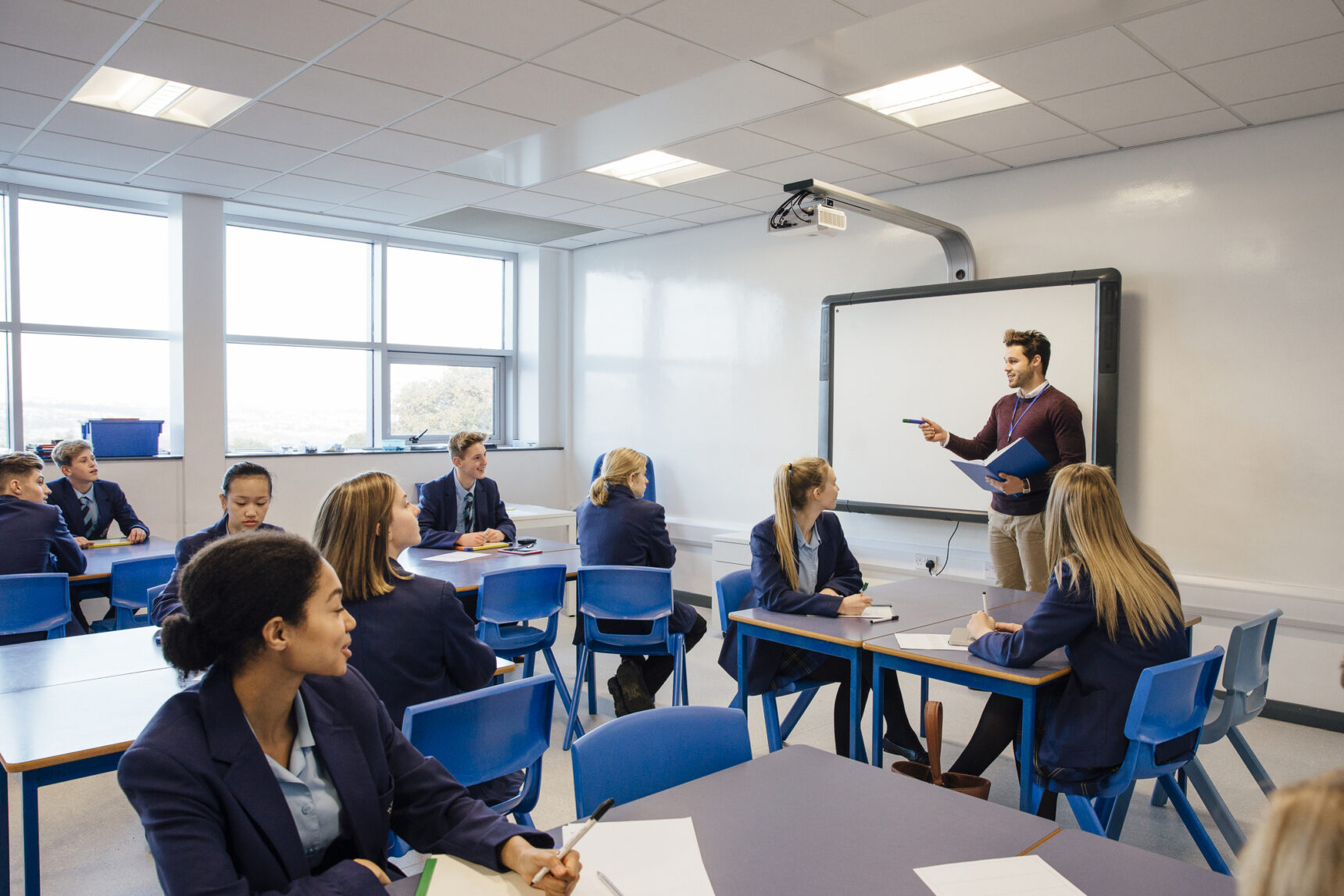When I started teaching, it was all about differentiation. The message from school leaders was clear: a perfect lesson would involve every child doing something different. In practice, this meant spending far too many hours creating worksheets of varying difficulty. Tasks were colour-coded, success criteria were ranked, and the message I unwittingly gave my students was one of varied expectations: that I had super high expectations of these five students, but that everyone else could get away with doing less.
Thankfully, those days are gone—despite the ‘d word’ appearing in the most recent iteration of the Early Career Framework (ECF) teacher standards! I like to think I now hold ultra-high expectations of every student, in every lesson.
But how do I ensure that each student is working to their full potential?
A simple cycle
The answer is to check in with them—constantly. Every few minutes, if possible. My typical loop looks like this:
- Model
- Assess: ask a large number of questions, check responses, and check understanding
- Decide to either
- Re-model or
- Move on
- Repeat
There is nothing groundbreaking here. Many would simply call this teaching. But if it’s that obvious, why doesn’t everyone do it?

What is adaptive teaching?
The phrase adaptive teaching is a term I have only recently come across. In a previous role, I was fortunate to be able to observe a lot of lessons. I remember a senior colleague describing one as “very adaptive”. When I asked what they meant, I was given a vague response: “involving AFL, or something”.
Like many pieces of edu-jargon, it seems to be a phrase so loosely defined that it means something different to everyone—Adam Boxer has written about the undefinable nature of many educational terms, which are less useful due to their vagueness.
The Education Endowment Foundation (EEF) has had a good stab at a definition of adaptive teaching, but as Matthew Evans argues in his excellent article, ‘Adaptive teaching: in search of conceptual clarity’, their version is quite broad. He proposes a much narrower definition, which focuses on the teacher continually adapting their teaching based on active and frequent checking for understanding. Clare Sealy’s four verbs model highlights the value of a whole-school approach to adaptive teaching.
Adaptive teaching in practice
To me, the idea of being adaptable in the classroom is a noble one. Long gone are the days when my lessons were bound by the rigidity of a pre-prepared slideshow. Instead, like many others, I choose to begin lessons from a blank canvas, building up the lesson at a pace suitable for the learners in front of me.
But what is that pace?

That’s where the skill of the teacher comes into play. By continually assessing everyone in the class using high think-ratio strategies, I try to understand whether they are ready to move on or if we need to revisit something. This, surely, is the adaptive part of teaching?
Easier said than done with a class of 34 Year 11 students.
Here, the mini whiteboard is my friend. As I’ve clocked up more and more flight time in the classroom, an increasing proportion of my questions are directed to the entire class so I can judge the understanding of everyone in the room.
Planning not printing
None of this should happen by accident. I’m not flying by the seat of my pants like Tom Cruise in Top Gun. The time I once spent at the photocopier producing five shades of worksheet is now spent thinking: How will I check the understanding? Which questions will give me the best info? When should I move on?
I’ve noticed I tell students the same thing: “I’m testing myself, not you. If you cheat, you’re giving me false data about your understanding.” Students generally respond well to this, as they can see why I ask them to spend so much time using mini whiteboards.
For me, this is what sits at the heart of adaptive teaching. It’s not a new idea, but a term that attempts to sum up a set of techniques familiar to anyone who’s read Lemov, Sherrington and Rosenshine.
Time spent planning, not printing.
Check for understanding, assess, and adapt.
It doesn’t matter what I call it; without these regular checks, I’m flying blind.









Thank you so much. This is an eye opener. Our leadership explain it differently and it looks like a new word in teaching that we need to learn, but we are doing it already.
Thank you.
I’m glad you found it interesting!